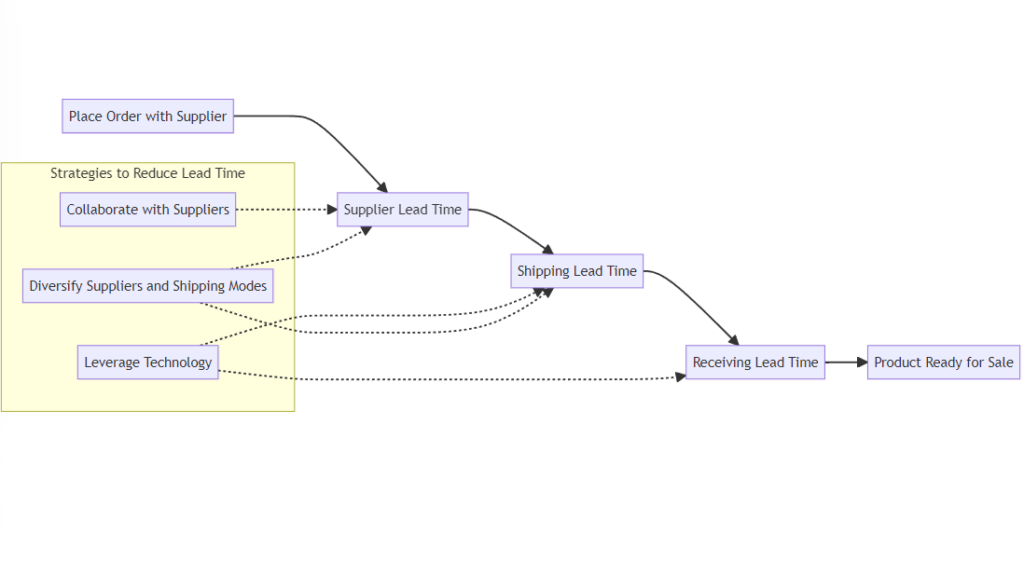
Navigating the bustling landscape of today’s business world demands a deep understanding of lead times. The ability to effectively manage and optimize lead times can usher in smoother operations, substantial cost savings, and a notable boost in customer satisfaction. Let’s immerse ourselves in the fascinating realm of lead time optimization and learn how to utilize it to elevate our business success.
What is Lead Time?
Lead time, at its core, is the interval between the initiation and completion of a production process. From the moment you place an order with a supplier to the time you receive the product, every tick of the clock adds to your processing time. However, it’s not just a simple countdown; several intricate elements factor into the overall lead time.
Lead Time Components
Supplier Lead Time
Supplier processing time is the time taken from placing an order until it’s ready for shipment. It includes manufacturing time and pre-shipment processing. This factor is dependent on the supplier’s efficiency and reliability.
Shipping Lead Time
Shipping processing time accounts for the time it takes for an order to be transported from the supplier’s location to your warehouse. It varies based on the chosen shipping mode, route, and any unforeseen delays such as customs or bad weather.
Receiving Lead Time
The receiving processing time starts ticking once the shipment arrives at your location. It involves the time taken to unload, inspect, and store the products in the warehouse.
By thoroughly understanding these components, companies can find avenues to cut down their overall processing time, paving the way for improved performance and customer satisfaction.
The Significance of Reducing Lead Time in Supply Chain Management
Reducing processing time in supply chain management bears significant advantages. It can dramatically enhance your company’s agility, allowing for quick response to market changes. Moreover, it reduces the necessity for inventory holdings, thereby cutting costs.
Improving Forecast Accuracy
When you shorten lead times, you also reduce the planning horizon, making your forecasts more accurate. This accuracy is paramount for maintaining just the right amount of inventory—avoiding both stockouts and overstocks.
Enhancing Customer Satisfaction
Faster lead times mean quicker order fulfillment, leading to higher customer satisfaction. It not only helps retain your existing customer base but also attracts new customers through positive reviews and word-of-mouth.
Strategies to Reduce Lead Time
Let’s now pivot towards practical strategies to achieve reduced lead times.

Collaborate with Suppliers
Establish a strong relationship with your suppliers to gain insights into their production schedules. Collaborate on improving process efficiency and consider setting up consignment inventories to reduce the supplier processing time.
Leverage Technology
Advanced supply chain management software can streamline and expedite various processing time components. Real-time tracking, automated paperwork, and predictive analytics can significantly cut down the shipping and receiving lead times.
Diversify Suppliers and Shipping Modes
Diversifying your suppliers and shipping modes can add flexibility to your supply chain. It allows for mitigation of risks such as supplier delays or shipping route disruptions, hence reducing your processing time.
Optimizing Lead Time with Third-Party Logistics (3PL)
Consider partnering with a proficient third-party logistics provider (3PL) to manage the complexities of your supply chain. A 3PL can provide expertise and resources to optimize processing time, allowing you to focus on your core business.
By understanding and strategically managing lead times, businesses can unlock numerous benefits, from cost savings to customer delight. Embrace the processing time journey and propel your business to new heights of efficiency and growth.

The above diagram presents a simplified view of processing time and its components, along with some effective strategies to reduce each component. Leveraging these strategies can optimize your overall processing time, streamlining your supply chain and enhancing your business performance.